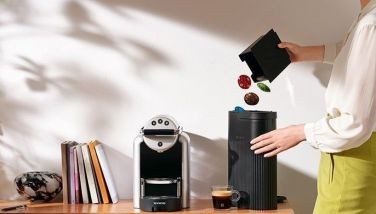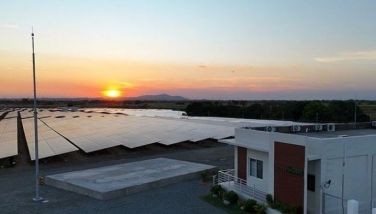‘A long road to P20 rice’

Before this story goes the way of the P20-a-kilo rice, authorities should stop trying to bring down the price of white refined sugar by press release.
Washed sugar cannot be lumped together as “and / or” white sugar. Any panadero and other major consumers of sugar will tell you that the two sweeteners are markedly different from each other – not just in color, taste and uses in cooking and baking, but most crucially in price: washed is about 30 to 40 percent cheaper than the other.
So when major supermarket chains commit to bring down the price of sugar to P70 a kilo, the government should first clarify if this refers to washed or white refined. Perhaps there was a misunderstanding over what precisely was committed.
And when authorities see price signages of P70 a kilo for sugar in the supermarkets, they should first check out the fine print for the type of sugar. Because I buy groceries regularly in the large supermarket chains, and so far the prices of white refined sugar still range from around P90 to a whopping P140+ per kilo.
Only washed sugar is available for P70+ per kilo. Anyone who says “washed and / or white sugar” is being retailed at P70 per kilo is a barefaced liar.
Then there’s the executive order reserving all cane sugar production to the domestic market. Major sugar millers have said that in reality, because of falling local production, no domestic sugar has been classified as “A” or for export (mainly to the United States) since 2019.
The pandemic lockdowns made shipping sugar especially across the vast Pacific Ocean even more difficult and expensive, the millers said. So all domestic production ended up for local consumption, they say – and still the supply has been inadequate.
The fact that President Marcos has approved the importation of 150,000 metric tons of white refined sugar – expected to arrive next month – proves that the shortage is not merely due to hoarding or price manipulation. Or a mere figment of the imagination of agricultural scientist Leocadio Sebastian, who got thrown under the bus to save the hide of President Marcos’ executive secretary.
* * *
Even peasant groups are saying that local agricultural production is down. While they initially hailed agrarian reform, they say the beneficiaries did not get the necessary farm support, funding access, post-harvest and marketing assistance to make their five-hectare plots viable.
Danny Carranza, secretary-general of farmers’ group Katarungan, cited these problems as the reason why beneficiaries of agrarian reform in what used to be the country’s largest sugar estate, Hacienda Luisita in Tarlac, are barely surviving these days.
Luisita, owned by the family of the late Corazon Aquino, initially managed to hold on to the estate, through a provision included by the landowning lawmakers in the Comprehensive Agrarian Reform Law that allowed large agricultural estates to distribute stocks rather than parcel out land to tenant farmers. Rodrigo Duterte, during his presidency, described the option as the “biggest aberration” in CARP implementation.
Actual land distribution of Luisita began in 2013, during Noynoy Aquino’s presidency.
Ferdinand Marcos the elder had launched land reform during his presidency, allocating an initial seven hectares per beneficiary. Will Junior pick up where daddy dearest left off, or will he abandon CARP in the name of economies of scale, and instead pursue other means of boosting food production and improving the plight of agriculture workers?
At least BBM isn’t kidding himself about his campaign promise of rice at P20 per kilo. Last Wednesday, he conceded that P20-a-kilo rice will take some time to achieve: “It’s a long road there, it’s not going to be easy.”
In the meantime, he’s considering granting rice allowance to government workers.
* * *
Last week at my suki rice wholesaler, the cheapest rice available was local regular milled at P34 per kilo for purchases by the sack. The mid-priced premium well-milled ranged from P38 to P44 a kilo.
The P20 a kilo is not only an “aspiration” of BBM but the price farmers’ wish for their palay. As of Wednesday, according to Carranza, palay price was at a low P12 per kilo, even as prices of imported urea and other farm inputs have skyrocketed.
What about the farmers’ share in the Rice Competitiveness Enhancement Fund, meant to assist farmers in boosting production as the government allowed a flood of imports under the Rice Tariffication Law?
To illustrate the insufficiency of the aid, Carranza cited the P25,000 that a farmer can obtain as credit for enhancing production capabilities. After the fund goes through the credit availment process, with fees collected at nearly every step, the farmer is left with only about P19,000, he said.
BBM is reviving his father’s Masagana ’99 program, through Masagana 150. Whether it will allow the country to be at least self-sufficient in rice if not an exporter remains to be seen.
At my suki rice dealer last week, “pandan” rice from Thailand and Vietnam were priced lower than “pandan” from Nueve Ecija. And the imports were more fragrant than the local.
“Miracle rice” or IR8 – which had double the yield of previous rice varieties and was credited with helping reduce hunger in much of the developing world – was developed and rolled out in 1966 at the International Rice Research Institute at the University of the Philippines in Los Baños, Laguna.
Our neighbors learned from the Philippines, so there is no reason why the country cannot be competitive in food production.
- Latest
- Trending



















